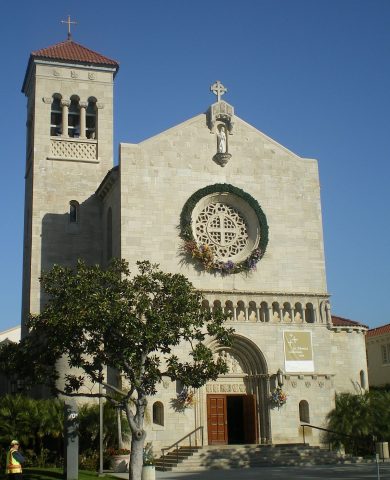USDA Offers a Policy of Humane Treatment… for Cats, by Tony Perkins
April 4, 2019Are You A Reactive Or Proactive Catholic Leader? by Marcel LeJeune
April 4, 2019
By Fr. Dwight Longenecker, April 3rd, 2019
There is a huge culture clash within the Catholic Church.
It is between the idea of a parish and consumer culture.
The administrative, sacramental and pastoral structure of our church is geographical. The kingdom of God (which is the church on earth) is divided into Archdioceses, dioceses and parishes.
This system was established when people had a national and regional identity. They were local. They lived in a village where they were born. They lived within an extended family, and the parish had its own hierarchy. “The rich man in his castle, the poor man at his gate.” The church and the priest contributed to the spiritual part of that model.
This works just fine as long as people remain local. Without modern transportation everyone walked everywhere or at most, rode a horse or took a carriage.
The parish church was simply a part of this larger social structure.
But we don’t live that way anymore. We are mobile and globalist. The family is broken. We go anywhere, live anywhere and settle (if we settle at all) anywhere.
We are consumerist nomads. We are modern hunter gatherers–going where there is a better job is no different than moving on to better pastureland for the flock.
Furthermore, we are consumerist in all out attitudes. We want what we want when we want it the way we want it and if we don’t get that we move on to find it somewhere else.
We treat every aspect of life that way including the church. We go to the church that gives us what we want.
The idea of belonging to the geographical parish where we live simply because that is where we live has totally disappeared.
The response amongst the clergy is predictable. Like everyone else hawking goods or products, we try to make our church attractive to the people who we are hoping to get in there. We cater the service times for them. We adapt the music to try to please everyone. We see ourselves as delivering a service to spiritual consumers and if they don’t get what they want they’ll be off somewhere else.
As a result in any one town you will find a range of Catholic churches with a range of different worship options and people go to that parish if they are more liberal or the other parish is they are more conservative. They go to this parish for the music or that parish for the youth work.
Furthermore, they treat the different parishes as franchise operations. If they are in a particular part of town and the schedule suits their weekend activities they’ll drop in at a different parish as they would drop by the local burger joint when they’re hungry and on the move.
How does one go about re-building the idea of the parish? Is it worth saving? If it was appropriate for an earlier age should we even try to implement it in an age for which it simply and obviously doesn’t work anymore?
And what about our church buildings and schools? Should we be investing in churches to stand for a thousand years when the population is constantly shifting? Witness all the big old churches in the Northern cities in the USA where splendid old churches sit in decaying urban communities where Catholics once thrived, but are now gone.
I am of the opinion that we should drop the geographical model of parish completely. It is already dead. Instead we should attempt to build communities that are intentionally mobile and diverse. We are united by our Catholic faith and liturgy not by geography, regional, local or ethnic loyalties.
This is where Rod Dreher’s “Benedict Option” provides some insight. A monastery was not essentially a geographically based unity. It was in the countryside and drew people from a range of backgrounds into an intentional community of prayer, worship, service and study. The monks were united around a shared rule of life and a commitment to finding the Lord within that rule. This model for the parish provides a strong central shared commitment, but is not bound by geography.
What would a “Benedictine Parish” look like? It would have a Rule of Life which would guide all the people. It would have a school and a commitment to families and children. It would be involved in service to the needy. There might be a core of people who were committed to the rule in a formal way. They would make up the heart of the parish community helping to guide and pray and direct the community along with the pastor.
Maybe it’s time for a fresh way of doing parish Catholic.




